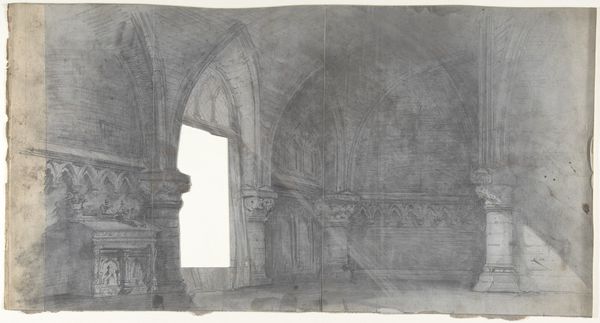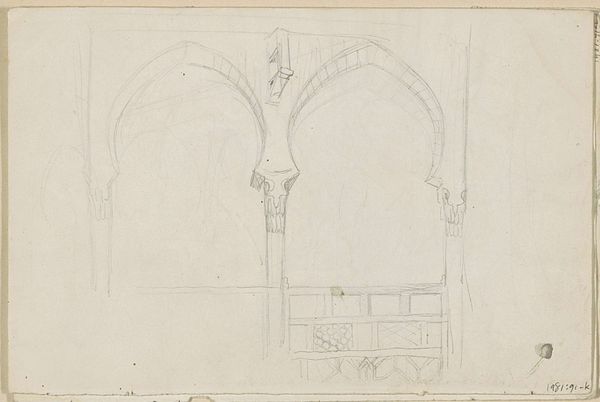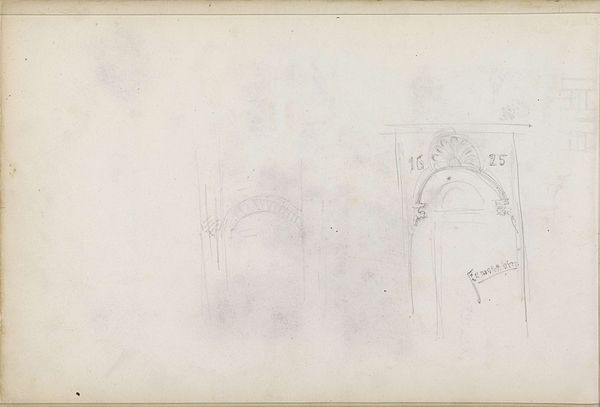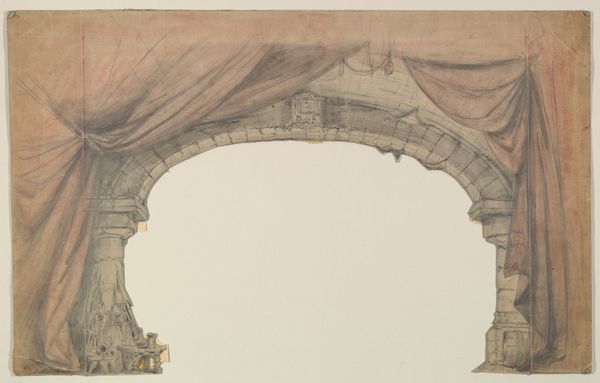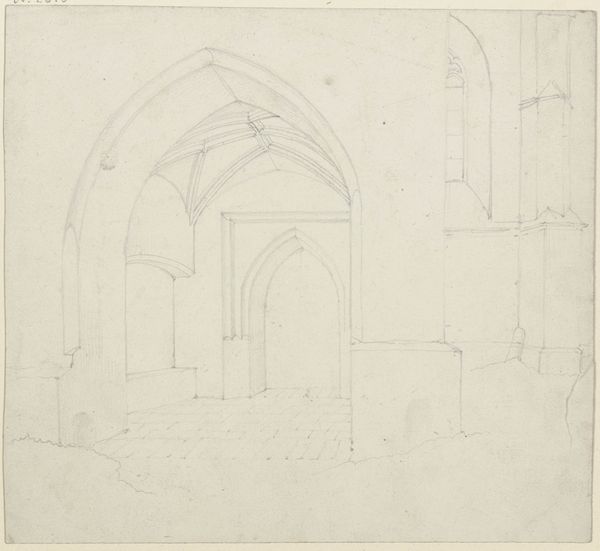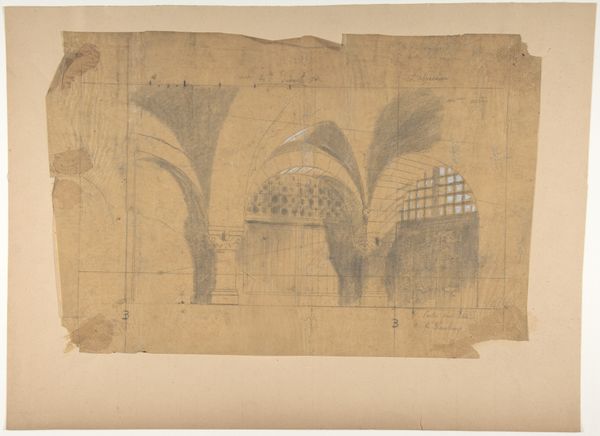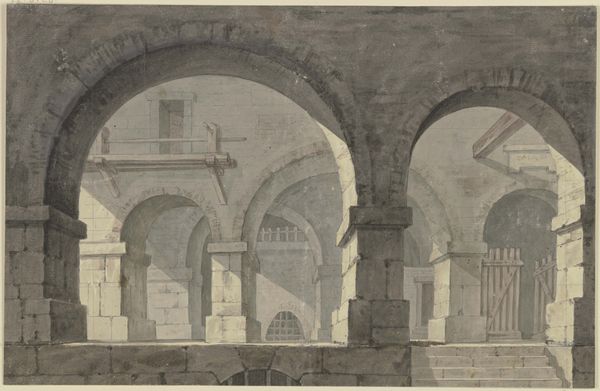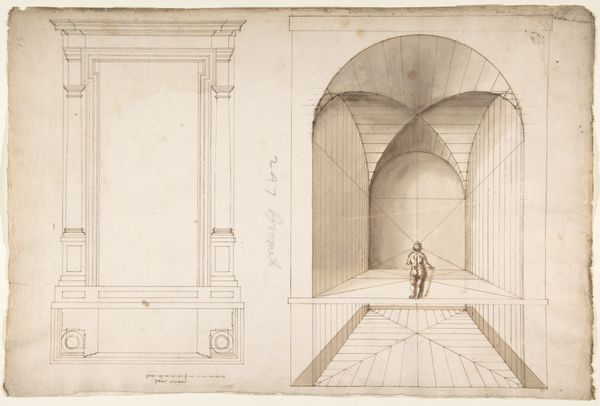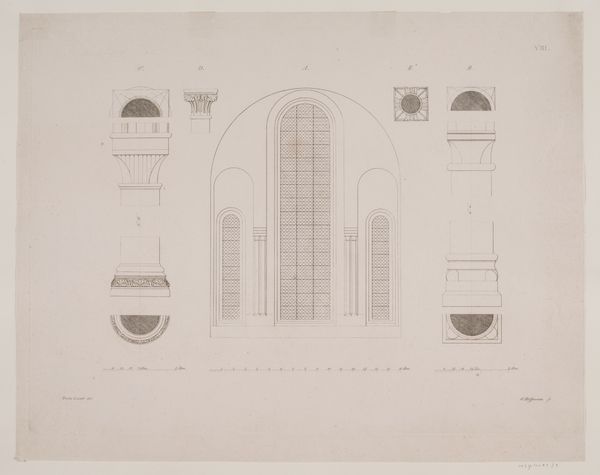
drawing, print, pencil
#
drawing
# print
#
perspective
#
form
#
pencil
#
line
#
watercolor
Copyright: Public Domain
Eugène Cicéri created this stage set design with graphite and watercolor on paper. The architectural study gives us a glimpse into stagecraft in 19th-century France. Notice the skeletal outlines, the visible grid, and unfinished edges. The drawing exposes the structure of illusion, rather than concealing it. The arches, window, and pillars combine Gothic grandeur with the flat, thin nature of theatrical scenery. The artist uses line and shadow to create depth and volume, but the composition remains resolutely two-dimensional. Perhaps Cicéri is commenting on the nature of artifice itself. He doesn't present a seamless illusion, but rather invites us to consider the systems of representation at play. By revealing the underlying structure, Cicéri prompts us to question the boundary between reality and representation. It is a meditation on how we construct and perceive the spaces around us.
Comments
No comments
Be the first to comment and join the conversation on the ultimate creative platform.
